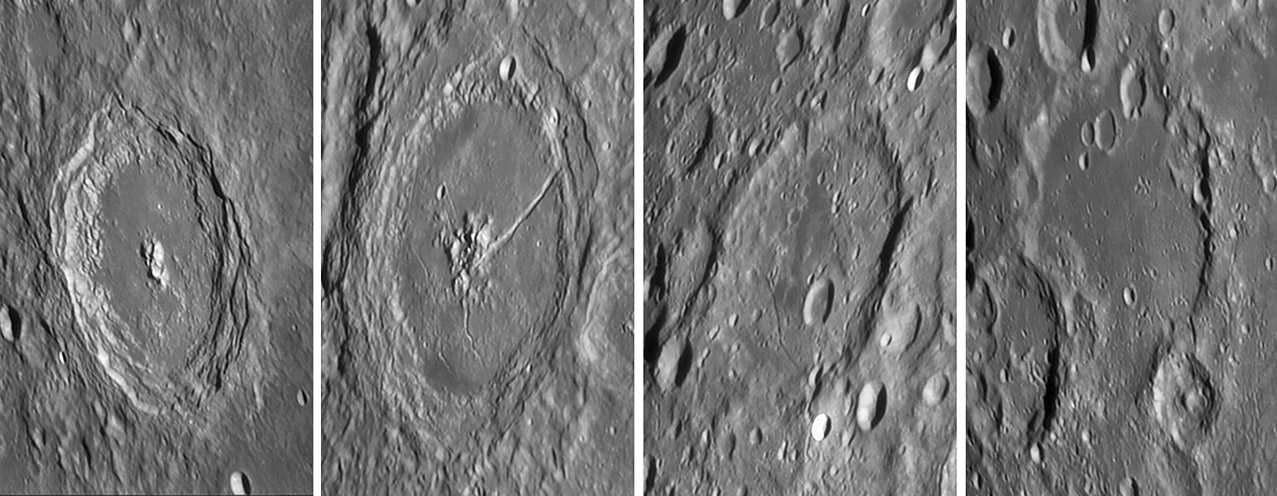
images by Stefan Lammel, Uxbridge, England
When newly formed, most lunar craters in a given size range look alike. Small craters are simple bowls, medium-size ones have less regular outlines due to wall slumps that deposit debris mounds on their floors, and big craters have flat floors with central peaks and wall terraces. This main sequence of impact crater morphology encompasses most craters with diameters between a few hundred meters and a few hundred kilometers. But most lunar craters don’t look like this idealized sequence because most have been modified by later impacts and volcanism. You can learn to read a crater’s history by comparing it with a fresh one of the same size. Near the southeast limb of the Moon there is a series of four craters that offer easy comparisons because they are all nicely visible at the time time. Stefan’s original mosaic shows the craters with the spatial relations they actually have on the Moon, but I cut them out and rearranged them in the sequence above. Langrenus is a relatively pristine lunar crater with a diameter of 132 km. It is what the other craters in the sequence probaly looked similar to when they were new. Petavius is older - it carries two to three later impacts and its terraces are less sharp - and it has been modified by volcanic activity of a special type. Apparently magma rose under the floor of the 177 km wide crater, uplifting its center causing the rille system and leaking out on the floor to construct a dome and pyroclastic deposits. Older still are Furnerius (125 km) and Vendelinus (147 km). I think Furnerius is slightly younger for the tip of its central peak is still visible and there are fewer large superposed craters than on Vendelinus. But both have been heavily battered and shakened to smooth out their terraces. Vendelinus’ floor is lava filled enought to bury the central peak.
Technical Details:
6 November, 2006; 23:58 UT. 10″ f4.8 Newtonian + 4x PowerMate + red filter, Registax v4, PSE 5, 1/60s, 600/5000 frames, MAP: 12×128; seven panel mosaic.
Related Links:
Rükl charts 49, 59, 60 & 69
To see image at full resolution visit Stefan’s website
Yesterday's LPOD: At the Edge of Certainty
Tomorrow's LPOD: A Really Tall Peak
COMMENTS?
Register, Log in, and join in the comments.



